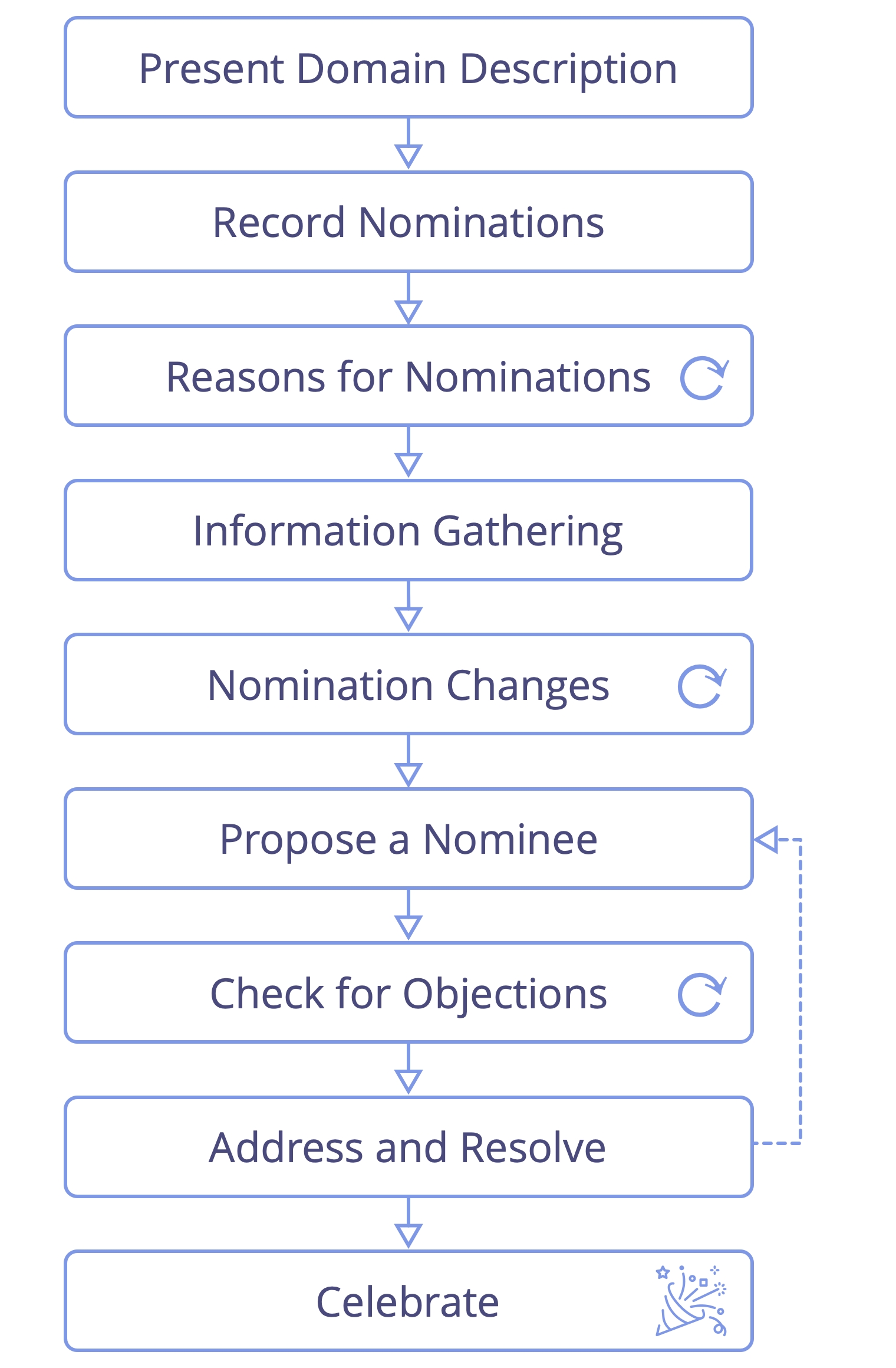Role Selection
A group process for selecting a person for a role on the strength of the reason.
Instead of simply assigning people for roles, or making a choice based only on majority, use the role selection process to:
tap collective intelligence by hearing and deliberating on reasons for nominations
increase ownership over the decision
ensure support for the role keeper by those affected.
A prerequisite to the selection process is a clear description of the role’s domain.
Role Selection - Steps

Present Role Description: If possible, send out the role’s domain description in advance.
Record Nominations: Participants write their nomination on a slip of paper. People can nominate themselves, another, or pass.
Reasons for Nominations: Each person shares who they have nominated and why.
Information Gathering: Participants share or request any information that might support the group in making an appropriate selection.
Nomination Changes: Check if anyone wants to change their nomination in light of reasons and information shared so far, and hear the reasons for each change.
Propose a nominee for the role: The facilitator guides the process to identify a suitable nominee on the strength of the reasons heard, e.g. by:
proposing a nominee themselves or asking a group member
inviting (some) nominees to agree who should be proposed
inviting group dialogue to help reveal the strongest nominee
Check for Objections: Ask participants (including the proposed nominee) to simultaneously signal whether or not they have an objection.
Address and Resolve Objections, beginning with any from the proposed nominee. Objections may be resolved in many ways, including amending the role’s domain description or by nominating someone else. When all objections are resolved, check with the (final) nominee again if they accept the role.
Celebrate: Acknowledge reaching agreement and thank the person who will now keep the role.
To avoid influencing others, abstain from expressing personal interest or opinions before a selection takes place.
Sometimes a role selection reveals a lack of capacity, relevant experience, qualities or skill. A group will then need to consider outside candidates, reconsider priorities or find an alternative way to account for the domain.
This pattern can also be used in any situation where there is a need to choose between a variety of options.
Last updated
Was this helpful?